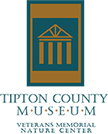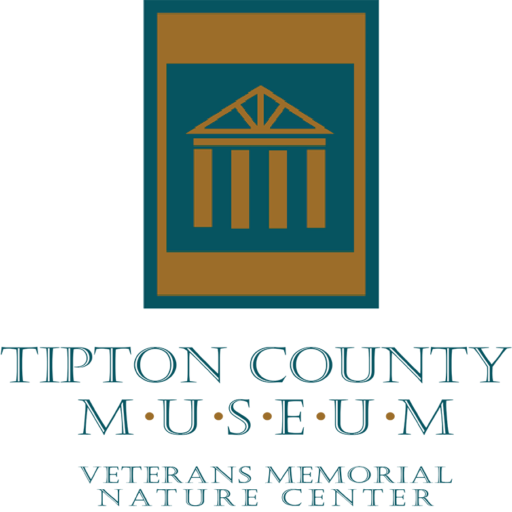Humble beginnings
Although the exact date of the establishment of St. Paul’s School is unknown, available Board of Education records do show it was in existence at least from 1911 to the end of its last school term and subsequent closing in 1968.
The colored school was located in the western portion of Tipton County in the community of Richardson and included students from Richardson, Drummonds and the Atoka communities. Many family names, including Wakefield, Alston, Boyd, and Washington are repeated throughout the years, as generations of the same family were educated there.
The first available records documenting the school’s history begin during the school term of Nov. 24, 1924 to April 17, 1925. In the historical education records, the story of the beloved community school and its pupils begin to emerge.
The one-room schoolhouse had just been built and was first occupied as a school on Feb. 25, 1925. It was a frame building, just 480 square feet with an ordinary stove and windows located on two sides of the building. The children had use of two toilets located on the outside of the building; their teacher, Pet Mae Gaines, recorded it as unsanitary. The water was drawn from a cistern and also believed to have been unsanitary. The blackboard was made of wooden planks, 24 inches from the floor and the children had the use of 12 patent double desks. There was no desk for the teacher and although the school was located on 10 acres, there was no playground equipment for the students who ranged from age 7 to 18 years.
Student Life
The teacher was Miss Pet Mae Gaines, a young 22-year-old originally from Covington, and who was teaching on a temporary certificate, issued the day the term started on Nov. 24, 1924. She was paid $40 a month and charged $10 a month for room and board. She was not married but did have one dependent. She taught the first through sixth grades.
That year, Gaines had a large class – 70 students – forty boys and 30 girls. She had students in every grade except for fifth and the age range in each grade varied greatly. First grade had students from 7 to 15 years. Second grade included ages 10 to 18. Third and fourth grades, 13 to 17 and sixth grade taught students ages 15 to 18. Out of the 70 students, 35 were attending school for the first time and the other 35 were on only on their second year of education. All of the students were children of farmers.
The student day started at 8:45 a.m. and lasted until 3:40 each day. Depending on the grade they were in, they would have lessons in spelling, reading, writing, drawing, arithmetic, geography, history, grammar, language, physiology, hygiene and music. The students’ textbooks included Child’s World for reading, First Journey for spelling, Edmondsons for writing, Ritchies for physiology and Wentworth’s Smith for math work.
At the end of the 1925 school year, only 54 students of out 70 were promoted to the next grade. No one in the third grade or the sixth passed at all.
War Years
The school term of 1939 to 1940 found students still using the same building, which had been built in 1925, except now, the records show that it was a bit larger; it was now a 720 square foot building. The drinking water and toilets were considered sanitary and the school now had playground equipment valued at $10. The building and its heating system were valued at $300 and the grounds at $20.
The school had textbooks for each of its grades, valued at $60 and the school’s library started the year with 30 books on its shelves and was able to add another 15 by the end of the school term. That brought the library’s value up to $8.
Mr. Turner Armstrong was now the teacher for the 1st thru 8th grades, and in fact, was the twelfth educator the one-room school had seen during its first nine years.
Turner was a high school graduate and had attended A & I State College for 18 months, leaving with 94 college credits. He had five years experience, all at St. Paul’s School. At 30 years of age, he was married and the father of one. He made $83 a month.
Turner had his students on a strict schedule during the school term:
8:25 to 8:30 a.m. – devotional
8:30 to 9:30 a.m. – arithmetic
9:30 to 10:30 a.m. – reading
10:30 to 11:10 a.m. – health
11:10 to 11:30 a.m. – writing and drawing
11:30 to 12 p.m. – history and civics
12 to 1 p.m. – noon recess
1 to 1:40 p.m. – spelling
1:40 to 2:40 p.m. – geography
2:40 to 3:25 – English
3:25 to 3:30 – adjustment
His students included 45 children, ranging from 6 to 19 years of age, none were in the seventh grade.
At the closure of the 1940-year Turner wrote in his record book,
“During the school year we have been very successful in adding new equipment to our school. We have completed the courses of studies as outlined by the state board of education. The greater part of the students have done satisfactory work, therefore passing their grades.”
Three students – Sam Cox, 16, Mammie D. Johnson, 17 and Viola Parker, 18 – all passed the 8th grade that year.
Turner taught at the school until 1949.

